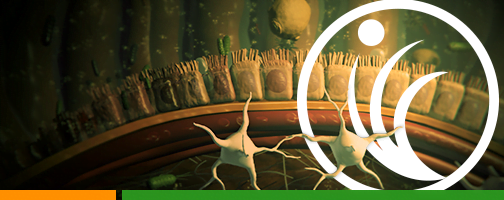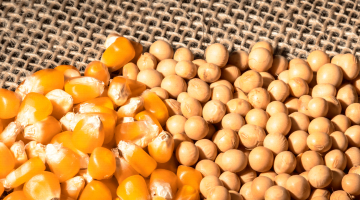Production quality vs. Antibiotic Free Program
The influence of consumers, the scientific community, and national and international regulatory agencies over the industry to stop using antibiotics as performance enhancers and to use it rationally in the therapeutic form in animal production is more than clear
Most recently, the use of colistin sulfate as a performance-enhancing zootechnical additive in the composition of animal feed was banned in Brazil.
According to MAPA, this ban is based on recommendations of the World Health Organization (WHO) and other international institutions; this concern is due to the hypothesis of influence on human health.
In January this year, the USA banned the use of any important antimicrobial substance for human medicine. Large fast-food chains joined antibiotic-free diets, in which antibiotics are never used in the production, not even in the therapeutic form.
In accordance with WHO, around 600 million (or almost 1 in 10) people in the world get sick after eating contaminated food; this represents 420 thousand deaths, also considering, in this number, about 125 thousand children, from 0 to 5 years old.
In Brazil, from 2007 to June 2016, 90.5% of cases of foodborne diseases were caused by bacteria, and the most common serotypes were Salmonella spp (7,5%), followed by Escherichia coli (7,2%) and Staphylococcus aureus (5,8%).
The impact of antibiotics in the gut microbiota has been investigated, and researchers showed that, in addition to changing the microbiota composition, antibiotics also affect gene expression, protein activity, and the general metabolism of gut microbiota.
Not only microbial changes caused by antibiotics increase the immediate risk of an infection, they may also affect long-term basic immune homeostasis.
With this new scenario, it is key that the supply chain adapts and applies a strict handling, health and nutrition plan, as the transmission may occur by feed, environment or even vertically (from breeder to broiler/laying hen), which is why proper handling is so important to control this issue.
There are different alternatives for controlling pathogenic bacteria on the market, such as live attenuated vaccines (which generally act on Salmonella gallinarum and Salmonella typhimurium, but also act on Salmonella enteritidis), feed products that act as bactericidal antibiotics (usually compounds of organic acids) on feed or products that act on the animal organism such as probiotics, organic acids, plant extracts, prebiotics, etc. Each product has different forms of action in the control of pathogenic bacteria (directly or indirectly), modulating the microbiota and the immune system response.
Solution: ImmunoWall®
ImmunoWall® is one of the solutions that may help with the pathogen control program, as it is a natural solution that helps reduce contamination and prevent the problem.
Based on this concept, ImmunoWall® stands out from other products in the market because it is composed of a dense Saccharomyces cerevisiae yeast cell wall, which has high concentrations of β-glucans and MOS, resulting in a reliable additive solution with great cost-benefit.
MOS can agglutinate pathogenic bacteria (such as E. coli and Salmonella), thus preventing colonization and proliferation of these populations in the intestines. β-glucans act by stimulating the production and activity of macrophages, which are defense cells that play an important role in the immune system: they can phagocytize and destroy microorganisms.
Thus, ImmunoWall® supplementation ensures that broilers maintain the balance of the gut microbiota and improve immune system responses, resulting in decreased contamination and transmission of pathogenic bacteria to other organs of the body.
Broiler chickens
In broiler chickens, a study has been published by Ferreira et al. (2014), which worked with 3 days old chickens infected with Salmonella Heidelberg (SH).
The results showed efficacy in reducing the presence of SH in the ImmunoWall® supplemented groups (0.5 kg/ton up to 35 days and subsequent dose increase, 2 kg/ton in the termination diet). SH resulted in a high prevalence in the poultry litter throughout the entire period evaluated (100%). However, there was a 50% reduction in SH contamination in the crop and a 12.5% reduction in the cecum when compared to the contaminated control group.
This reduction in SH contamination in the crop and the cecum is key for food safety, as it reduces carcass contamination in slaughterhouses, since these organs may rupture during the process.
Another study has been conducted to understand better animal performance responses to different levels of including ImmunoWall® compared to the AGP. There was no statistical difference between the different studied levels of ImmunoWall® and the positive control (AGP) regarding weight gain, and for feed conversion, the level of 0.5 kg/ton was similar to AGP.
Results showed that replacing a natural product by the AGP does not harm performance, as the benefits expected for gut health also reflect zootechnical indexes.
Establishing a connection between quality, nutritional value, and food safety requires extensive research by industries, mainly to ensure public health.
Although intensive poultry farming is challenging, it is a fact that food safety begins on the farm, where pathogens may be controlled without the use of antibiotics. It is of utmost importance, for example, that producers, who are the first link in the production chain, are committed; after all, it is proven that reducing pathogens in the field contributes significantly to reducing the risk of foodborne diseases due to bacterial contamination.
Concern about the quality and formulation of the ingredients and additives used in animal feed is a global and irreversible trend, as the end consumer is becoming more aware of the relationship between “nutrition and health”.
In addition to being a natural additive, the yeast cell wall has proven to be a viable solution for improving intestinal health and food safety at low dosages, resulting in an excellent cost-benefit.
For more information, contact us.
Posted in 03 October of 2019


